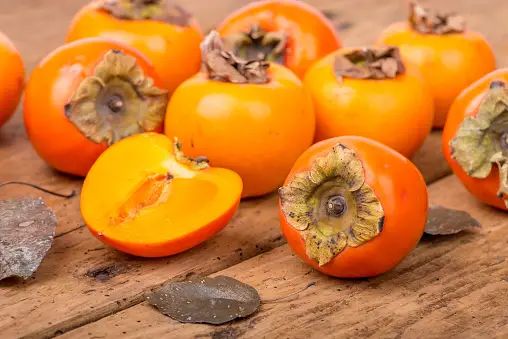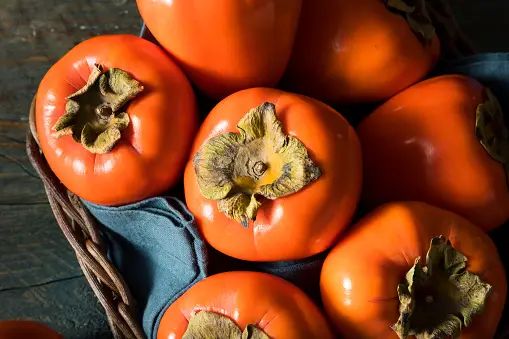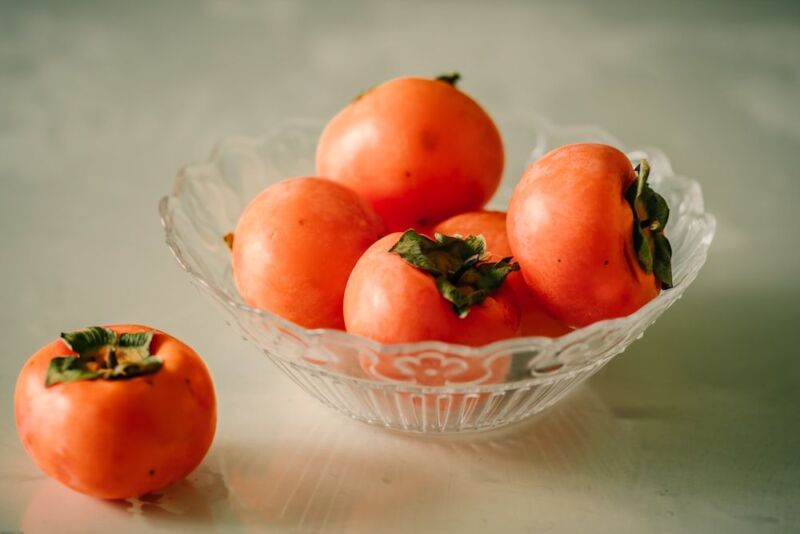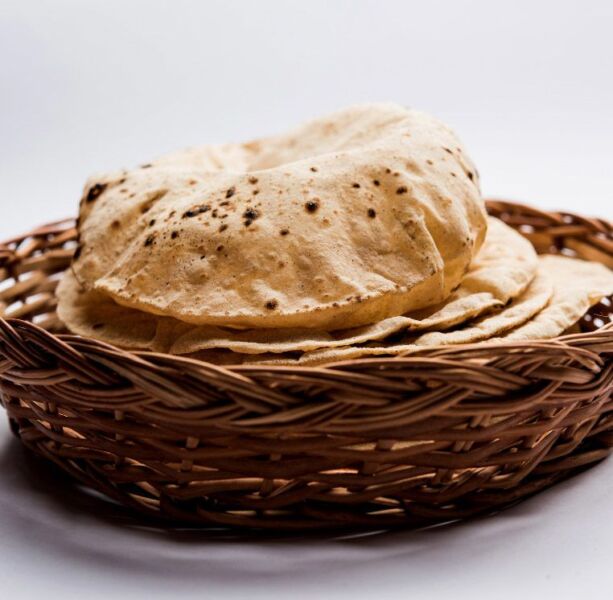Can You Freeze Persimmon?
Persimmons are a bright orange, tomato-shaped fruit popular around the world. Like tomatoes, persimmons have a high water content which makes them prone to spoiling from bacteria and fungi. For this reason, proper preservation techniques are necessary for extending the shelf life of ripe persimmons. One method of preservation is freezing, which comes with both benefits and drawbacks. With the right strategies, frozen persimmons can still be enjoyed in numerous dishes. However, unripe persimmons react negatively to freezing. Understanding the nuances of persimmon preservation allows you to maximize their use.
Susceptibility to Spoilage

Persimmons contain 80-85% water, giving them a soft flesh with a jelly-like texture when fully ripe. Their high water content makes them vulnerable to spoilage from microbial growth. Within a few days, persimmons will develop mold, become slimy, or rot if left at room temperature after ripening. Like other produce with high water content such as tomatoes or strawberries, proper preservation is key for enjoying persimmons long after harvest.
Since fresh ripe persimmons quickly develop signs of spoilage, preservation techniques are vital for extending their shelf life. Proper preservation not only maintains the fruit’s quality longer but also reduces food waste. Methods like freezing, refrigeration, and proper storage allow you to enjoy persimmons over an extended period while preventing premature spoilage.
Freezing Persimmons
Freezing is one preservation technique for ripe persimmons. It can extend their shelf life for months while maintaining quality. However, freezing does impact the fruit’s texture and appearance.
When frozen, water inside persimmons expands forming ice crystals. These crystals cause the soft flesh to tear, resulting in a mushy or mealy texture once thawed. The skin also darkens due to cell damage from ice crystals. While less firm, the overall flavor remains intact.
Since freezing alters persimmon texture, incorporate thawed fruit into dishes not requiring an intact shape or firm flesh. Use frozen persimmons in breads, cookies, puddings, smoothies, or sauces. Pureeing or mashing helps minimize texture changes.
Only freeze fully ripe persimmons at their peak flavor. Unripe fruits won’t soften properly when thawed. Also avoid freezing persimmons after slicing or peeling as this exposes more surface area to oxidation and ice crystal damage.
Freezing Unripe Persimmons
Freezing unripe persimmons interrupts the natural ripening process and enzymes. This can permanently affect texture and flavor.
As persimmons ripen, enzymes convert starch into sugars, increasing sweetness. Textures soften as pectin is broken down. These intricate chemical changes allow persimmons to become edible and appeal to seed dispersers. Low temperatures hamper these enzymes.
Freezing halts enzymatic reactions driving ripening. Upon thawing, texture and flavor may fail to fully develop. Unripe persimmons are especially sensitive to freezing damage.
Freezing unripe fruit often causes undesirable results. The flesh may become mealy with pockets of frozen ice crystals after thawing. Sugar development also diminishes, leaving the fruit tasteless compared to a naturally ripened persimmon. Allow unripe fruit to fully ripen before freezing.
Shelf-Life of Ripe Persimmons

How long ripe persimmons last depends on storage conditions. Optimal temperature, humidity, sunlight, and isolation from other produce help maximize shelf life.
Store ripe persimmons in a non-airtight container in a dark, dry space around 50°F. Prevent contact with other fruits and vegetables which expedite ripening. Check frequently for signs of spoilage like mold.
With optimal storage, ripe persimmons last up to 5 days on the counter and up to 2 weeks refrigerated. Maintaining recommended humidity, temperature, darkness, and separation from other produce extends shelf life.
Refrigeration of Persimmons
Refrigerating ripe persimmons preserves quality and shelf life longer than room temperature storage.
A refrigerator provides consistent cool temperature and regulated humidity. This slows ripening enzymes and water loss to better maintain texture and appearance.
Only refrigerate fully ripe persimmons. Unripe fruits won’t properly ripen in cold storage. Allow natural ripening until soft with sweet, jelly flesh.
Before refrigerating persimmons, place in a resealable plastic bag with air pockets to prevent condensation from accelerating spoilage. Store for up to 2 weeks.
Most sources recommend refrigerating persimmons for no more than 5 days for best results. Extended cold storage will continue deteriorating texture and moisture.
Freezing Process
With ripe persimmons and the right materials, the freezing process is straightforward.
You’ll need a baking sheet or tray, plastic cling wrap, aluminum foil, and a freezer. Ensure your freezer maintains a temperature below 0°F.
Wash persimmons in cool water, then dry completely with a paper towel to prevent freezer burn. This removes dirt and mold spores for better preservation.
Arrange washed persimmons in a single layer on the baking sheet without touching. This prevents them from freezing together in a block.
Wrap the tray first in plastic cling wrap, smoothing out wrinkles, then in aluminum foil. The double barrier protects against freezer burn and oxidation.
Store wrapped persimmons in a deep freezer below 0°F. Properly frozen, they’ll last up to 3 months before quality declines.
Thawing Persimmons

The thawing method impacts final texture due to ice recrystallization so thaw frozen persimmons gradually.
Slow thawing minimizes cell damage from ice crystals reforming during melting. This helps retain more flesh intactness once fully thawed.
Thaw frozen persimmons overnight in the refrigerator. Remove foil to allow moisture to evaporate and prevent sogginess. This preserves more structure.
While faster, thawing at room temperature can increase icy texture from fast melting. Only use room temperature thawing if short on time.
Factor in your intended use, timeline, and ideal texture when choosing a thawing method. Adjust strategies to meet your preservation goals.
Conclusion
Maximizing persimmon shelf life requires proper handling. While frozen storage extends use, freezing unripe fruit negatively impacts texture and flavor. Always allow full ripening first.
Using methods like strategic refrigeration, correct freezing, and optimal storage allows enjoying persimmons longer. Preservation techniques minimize waste and make seasonal fruits last.
Consider your timeline, ultimate use, and texture preferences when deciding on preservation methods. Balance freezing, refrigeration, and storage strategies for your goals.
With the right techniques, ripe persimmons can be enjoyed long after harvest. Proper handling provides the best quality and maximizes use of this delicate fall fruit.






